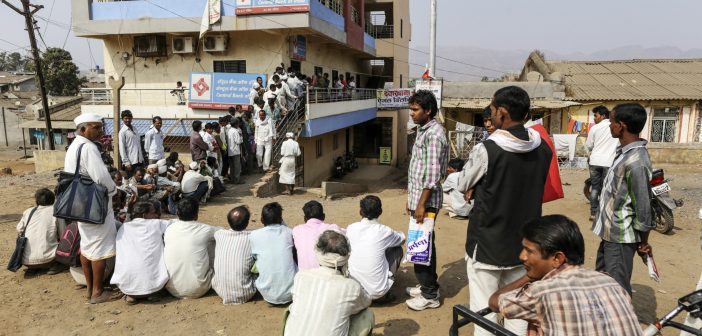In the heart of India’s vibrant democracy lies a paradox. As the nation embraces digital banking and financial inclusion, millions in rural areas remain excluded due to a critical lack of banking services and a severe shortage of ATMs. This digital divide creates a cascade of problems, hindering financial growth, increasing vulnerability, and perpetuating a cycle of poverty.
A Stark Reality: Absence of Banking Infrastructure
According to a World Bank report, India boasts over 200,000 ATMs, a seemingly impressive number. However, the distribution is far from equitable. A mere 20% of ATMs serve a staggering 67% of the population residing in rural India. This translates to one ATM serving, on average, ten villages.
The absence of physical bank branches paints a bleaker picture. Rural areas often lack dedicated bank branches, forcing residents to travel long distances for basic banking needs like account opening, cash deposits, and withdrawals. This journey can be arduous, consuming precious time and resources, especially for women and marginalized communities.
Consequences of Exclusion: A Vicious Cycle
The lack of banking services in rural areas has a domino effect on people’s lives and livelihoods. Here’s a closer look at the consequences:
- Limited Access to Government Schemes: Many government welfare programs disburse benefits electronically. Without access to bank accounts or ATMs, villagers struggle to access these benefits, exacerbating financial hardship.
- Vulnerability to Loan Sharks: The absence of formal credit options pushes villagers towards exploitative loan sharks who charge exorbitant interest rates, trapping them in a vicious cycle of debt.
- Hinders Financial Growth: Without access to banking services, saving and investing become challenging. This impedes financial growth at an individual and community level, hindering entrepreneurship and economic development.
- Limited Participation in the Digital Economy: The increasing shift towards digital payments excludes those without bank accounts. This creates a barrier to accessing essential services and online markets.
Beyond ATMs: Exploring Alternative Solutions
Addressing the challenge requires a multifaceted approach that goes beyond simply setting up more ATMs. Here are some promising alternatives:
- Expanding Micro-ATM Networks: Micro-ATMs are portable devices that allow basic banking transactions like cash withdrawals and balance inquiries in remote locations. These can be operated by local shopkeepers or community workers, bringing banking services closer to the people.
- Leveraging Business Correspondents (BCs): BCs act as agents for banks, offering limited banking services in rural areas. This model can be further strengthened by providing training and incentives to BCs, ensuring wider reach and efficient service delivery.
- Mobile Banking Solutions: Promoting mobile banking through user-friendly apps and USSD services in local languages can empower villagers to access basic banking services on their mobile phones. This requires overcoming issues of low smartphone penetration and internet connectivity in rural areas.
- Financial Literacy Programs: Educating rural communities about the benefits of formal banking and safe financial practices is crucial. This can empower them to make informed financial decisions and utilize available services effectively.
The Road Ahead: Bridging the Digital Divide
Bridging the digital divide in rural India requires a collaborative effort from various stakeholders:
- Government Initiatives: The government needs to prioritize financial inclusion policies to incentivize banks to expand their reach in rural areas. Regulatory frameworks can be streamlined to facilitate the growth of micro-ATMs and BC networks. Additionally, promoting digital literacy programs can empower rural communities.
- Technological Innovation: Financial institutions can collaborate with technology providers to develop innovative solutions like offline mobile banking features and low-bandwidth apps that function in areas with limited internet connectivity.
- Financial Inclusion Through Public-Private Partnerships: Collaborative efforts between banks, fintech companies, and NGOs can leverage each other’s strengths to develop and implement inclusive financial solutions tailored to the needs of rural India.
Conclusion: A Future of Financial Inclusion
The lack of banking services in rural India is a complex challenge with far-reaching consequences. However, by embracing innovative solutions, fostering financial literacy, and prioritizing financial inclusion, India can bridge the digital divide. This will empower rural communities, break the cycle of poverty, and pave the way for a more inclusive and prosperous future for all.





